June is the time of year when polar bears are wrapping up their biggest feasting period — a time when they gorge themselves on the bounty of plump seal pups — and their mating season. They should be fat and happy and trying to maximize their time on the ice while gauging when to come ashore as the sea ice starts to melt. Below are snapshots of what each of the bears we follow on our Polar Bear Tracker have been up to.
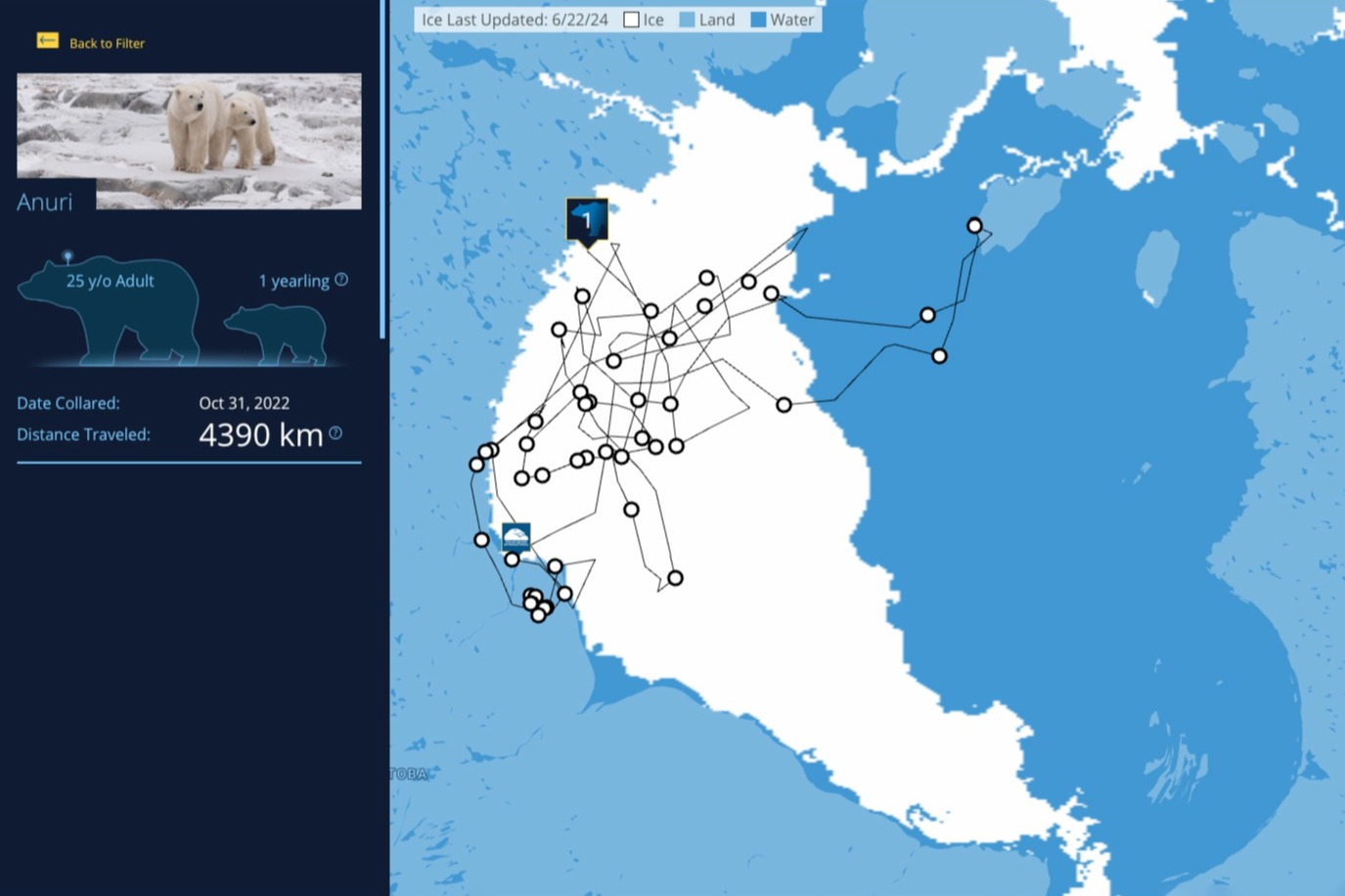
1. Anuri - X19827, Polar Bears InternationaI’s Storytelling Bear
Twenty-five-year-old Anuri and her yearling are still big movers! Anuri has recently been keeping her movements concentrated largely in the northwest region of the bay, meaning it’s probably a good area to hunt seals. This little family has just had several months of great feeding, and hopefully Anuri’s cub learned lots about hunting (and maybe even helped a little!) since it now has less than a year left with its mom. Both mom and cub should have packed on plenty of weight by now, but they’ll still want to maximize their hunting season before the ice melts. The time is coming for Anuri to choose when and where to return to land for the summer — a tough choice when balancing energy needs. Summer means at least several months of fasting, but luckily there is still some ice in this region so hopefully many more seals will be consumed before then!
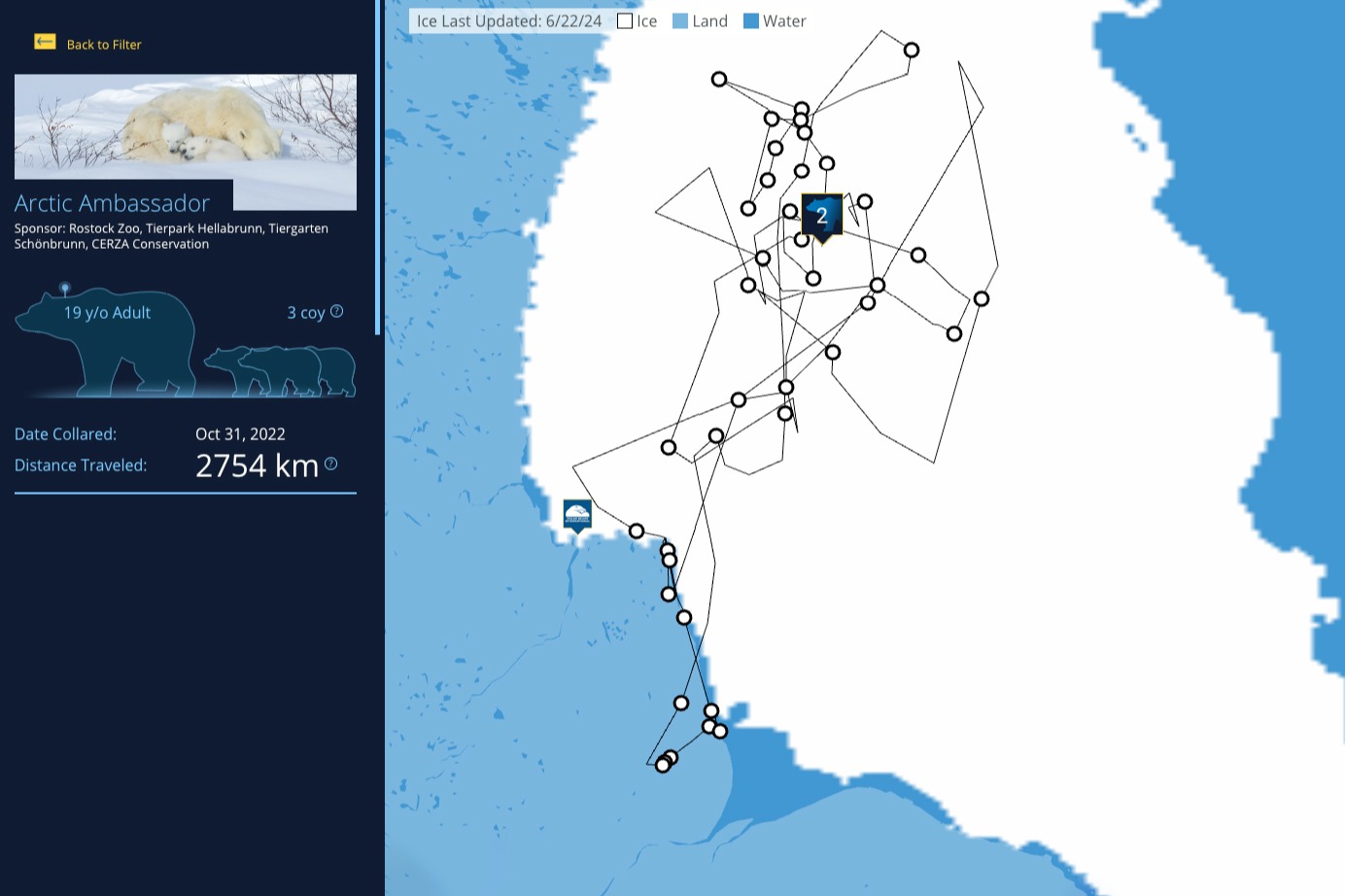
2. Arctic Ambassador - X33203, Arctic Ambassador Centers
Arctic Ambassador Bear and her triplets have covered a surprising amount of sea ice since March! This mama must have been hungry after giving birth to and nursing three babies all while not eating for eight months. This family’s den emergence was timed with the seal spring pupping season, meaning lots of available, naive, easy-to-catch prey and tons of calories were available when the family finally hit the sea ice. Hopefully Arctic Ambassador Bear was able to regain much of her weight and pack on some pounds while caring for her three babies on the shifting sea ice this spring. There is a tough month ahead as this family navigates the melting ice and adult males in order to make it back to shore where they can rest for the summer. Arctic Ambassador Bear will need to make some difficult decisions, but at 19 years old, this is not her first rodeo and we’re sure she knows what she’s doing.
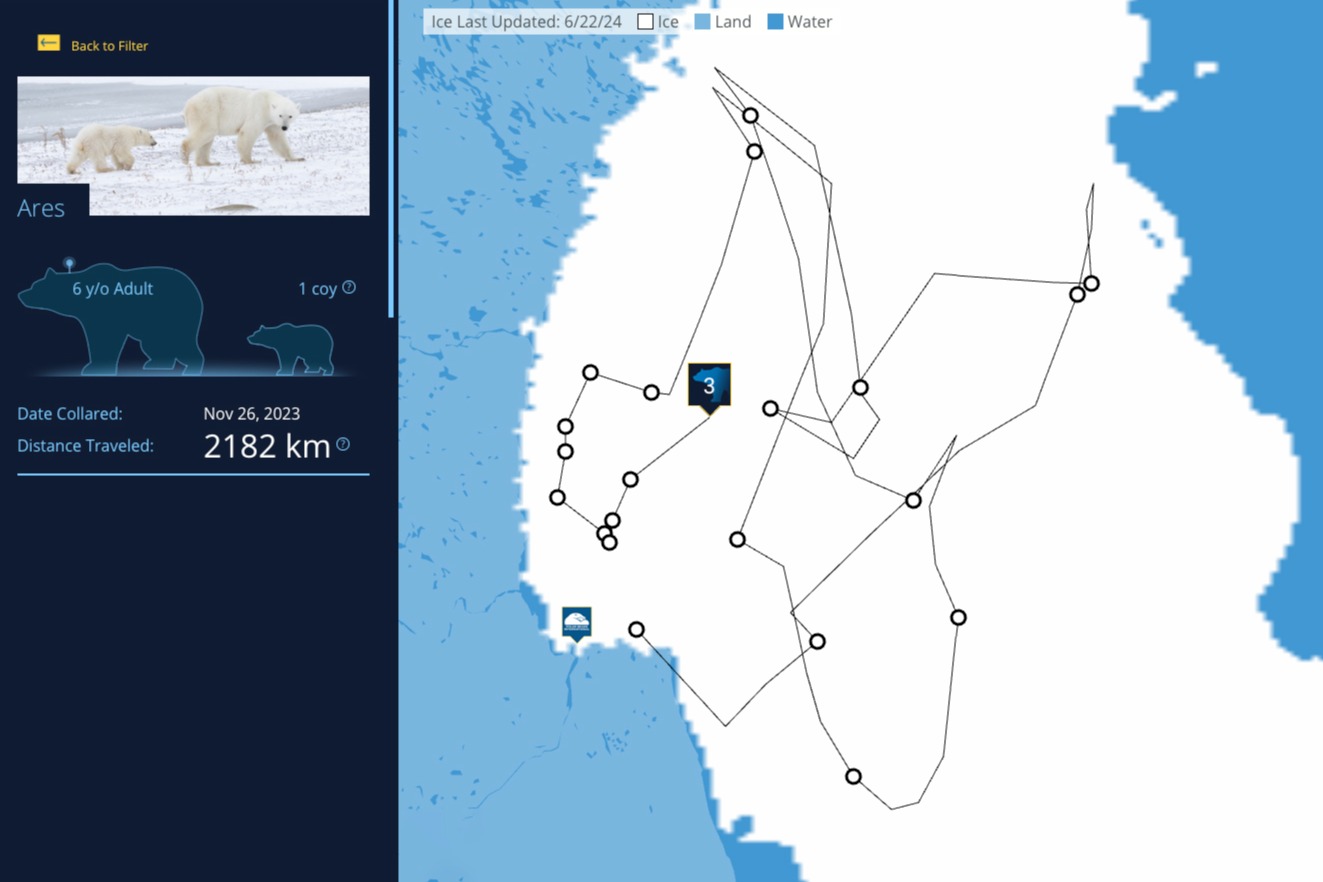
3. Ares - X33910, Shai
This seven-year-old mom and her yearling have walked over 2100 km since late November - no small feat! During this time they stayed in the western half of Hudson Bay, zigzagging back and forth often and ending up quite far north at times. Over the last month Ares has started making her way down south, closer to where she will rest this summer, which will likely be in Wapusk National Park in Manitoba. All this while, we know Ares and her cub have been hunting as much as possible, gorging on seal blubber and packing on the pounds that will get them through their months on land, away from their seal prey (and Ares will be fasting while nursing!). As the sea ice starts to break up this summer, Ares will need to make a tough choice about when and where to come back to land. She’ll want as many days on the ice to hunt as she can eke out, while trying to avoid a long swim or walk, all while dodging large males or other dangers. Ares is young and this may be her first ever cub — good luck to them in the next month. We hope both bears are fat and happy!
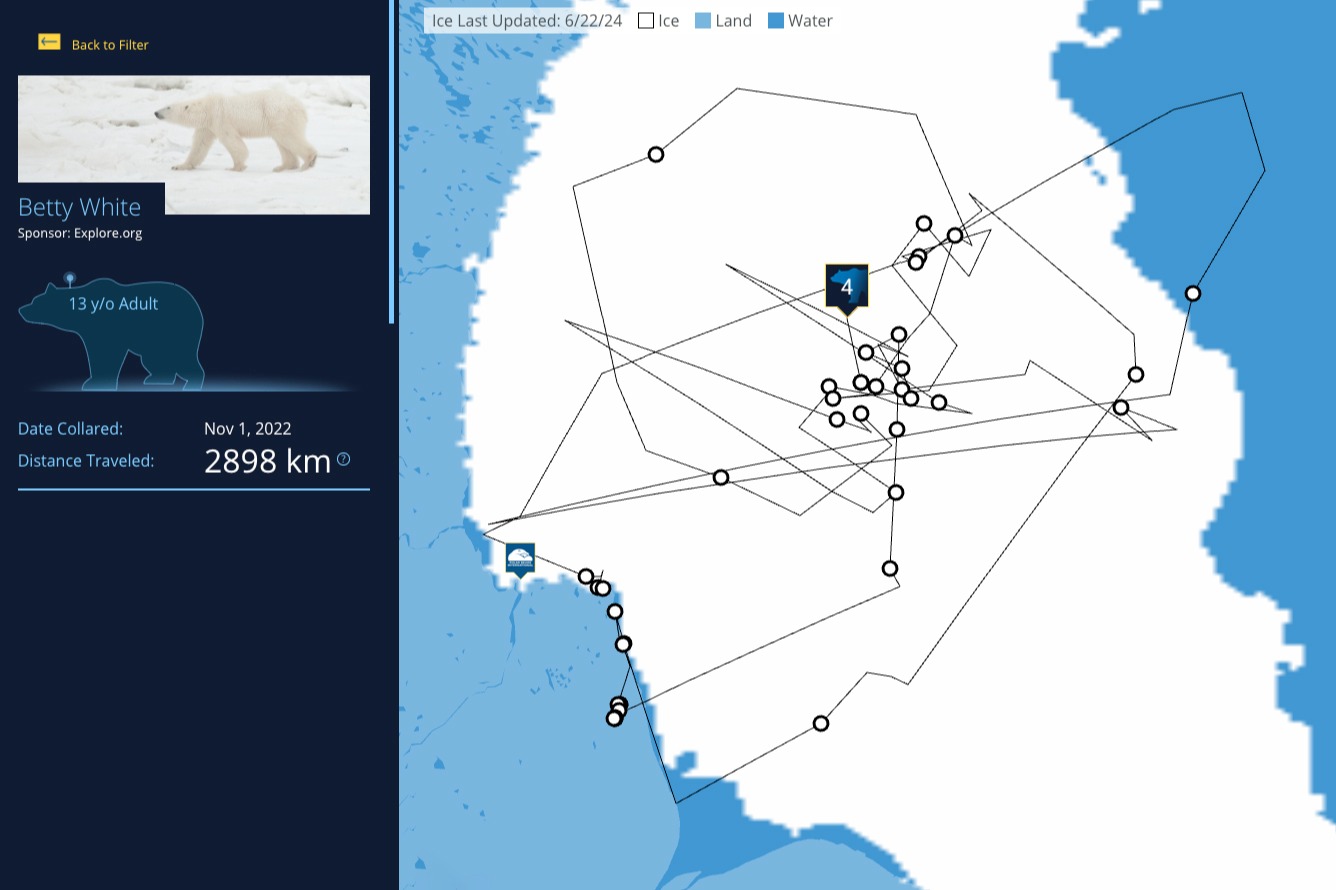
4. Betty White - X33570, explore.org
Betty White can still surprise us. She spent much of her last couple months in a small region of the western Hudson Bay sea ice, zigzagging back and forth across her preferred area. We assume there was great seal hunting in this spot and Betty was gobbling up as many seals as she could to gain back weight after her long fast in the den over the past winter. She has been on the ice since early March, meaning she’s had several months to regain the weight she lost after fasting for almost eight months while giving birth to and nursing cubs. We’re not 100% sure if she has cubs with her as we haven’t had any visuals, but we can see she is behaving like she has a cub or two in tow. Betty will need to make a choice to come back to land in the coming month or so; exactly where or when could depend on weather, other bears, seals, the ice breakup patterns, etc. We hope someone will spot Betty this summer on land and see what her current family looks like. Until then, we wish her luck and more happy hunting for as long as possible!
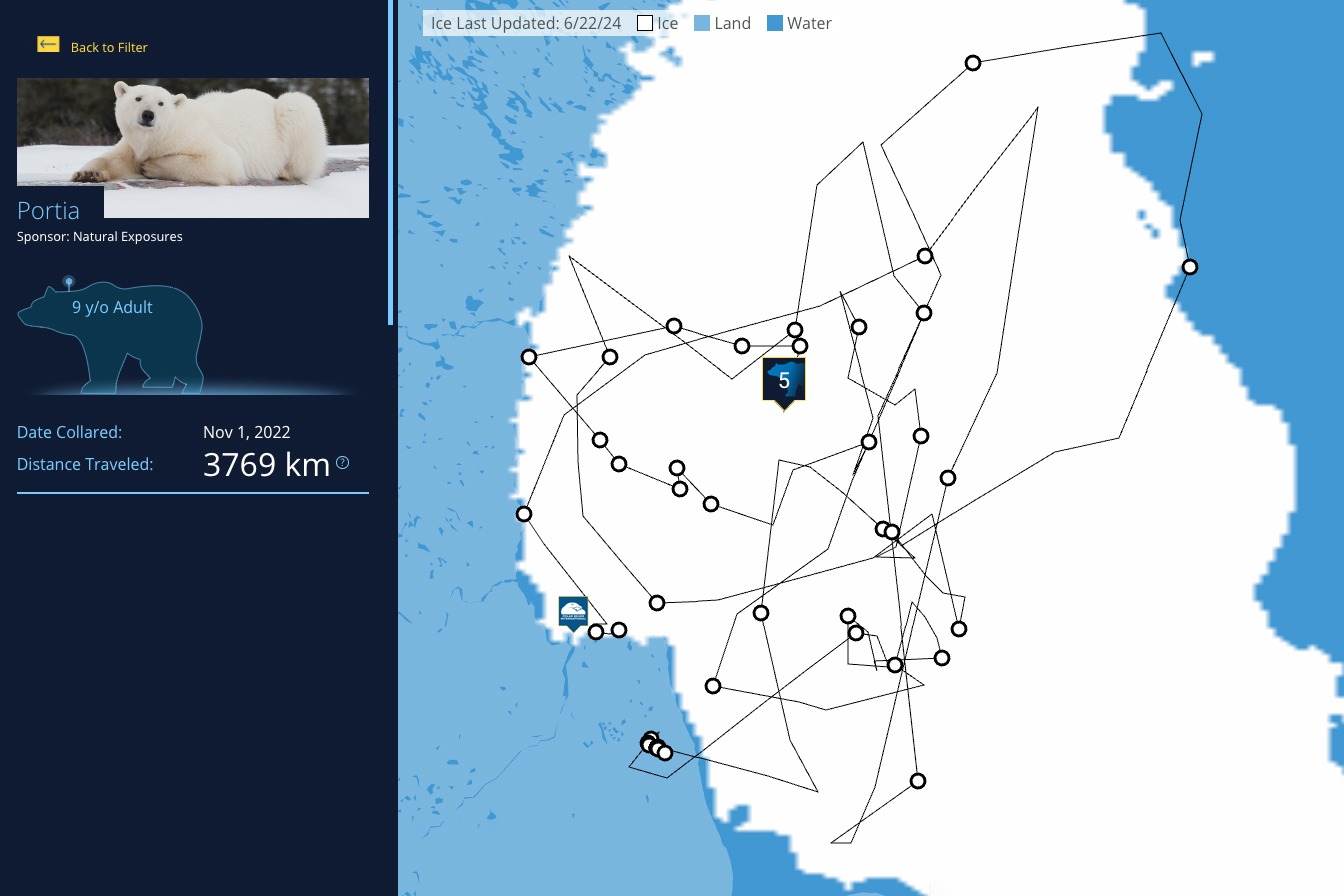
5. Portia - X33829, Natural Exposures
Portia remains on the move and always interesting! She has not slowed down since getting on the ice with her new family this February. Portia first headed north and has continued hunting as she’s looped all around and, more recently, back toward the coast. We’re not sure how many cubs she has to feed, but we hope she’s been successful in filling up on seal blubber and back to packing on the pounds. Portia recently has been very close to the coast - we aren’t sure if she’ll get onto land now or simply walk south on the sea ice, hugging the shore and hunting as much as the remaining ice allows. It is likely safer with young cubs to be closer to land now in order to avoid any long swims later. We look forward to seeing where she ends up for the summer, and hopefully someone will get eyes on how many cubs she has in tow. We wish her happy hunting and an early freeze-up this fall!
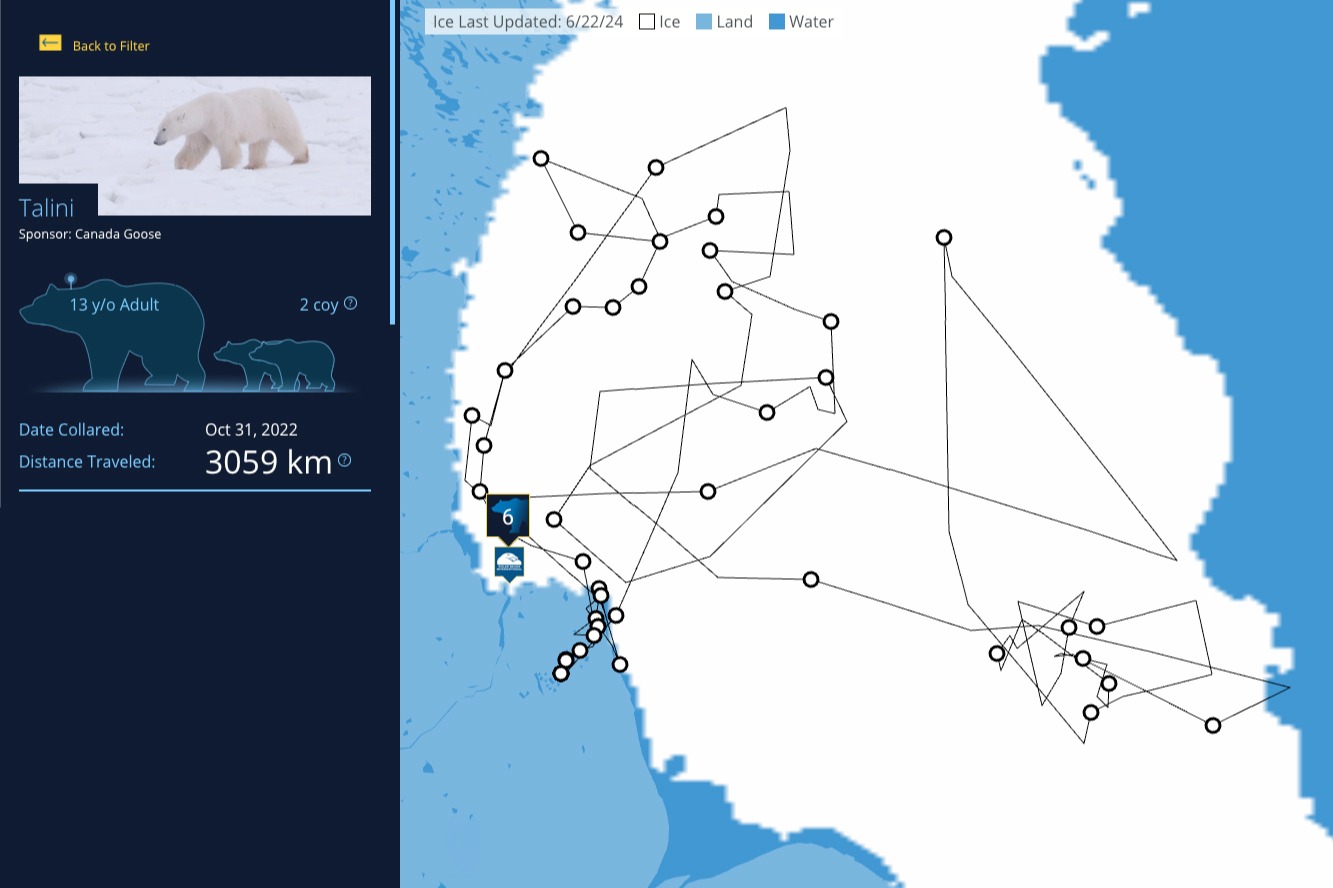
6. Talini - X33565, Canada Goose
Talini’s collar finally kicked back in! She’s been on the ice since early May, hunting seals and packing on as many pounds as possible with her two new cubs in tow. Having cubs has not slowed Talini down, as she’s made big movements north and recently has been circling in a northwest portion of the bay - there must be plenty of seals there! Talini will soon have to choose when to come back to land - she’ll want to balance staying on the ice long enough to keep eating seals, but not too long that the family is forced to have a long swim back to shore. Little cubs don’t do well with long swims. Talini still has time to eat and we hope she is gaining weight and teaching her cubs how to navigate the ice as it shifts and melts. Good luck to them, we hope to see them this summer or fall near Wapusk National Park!
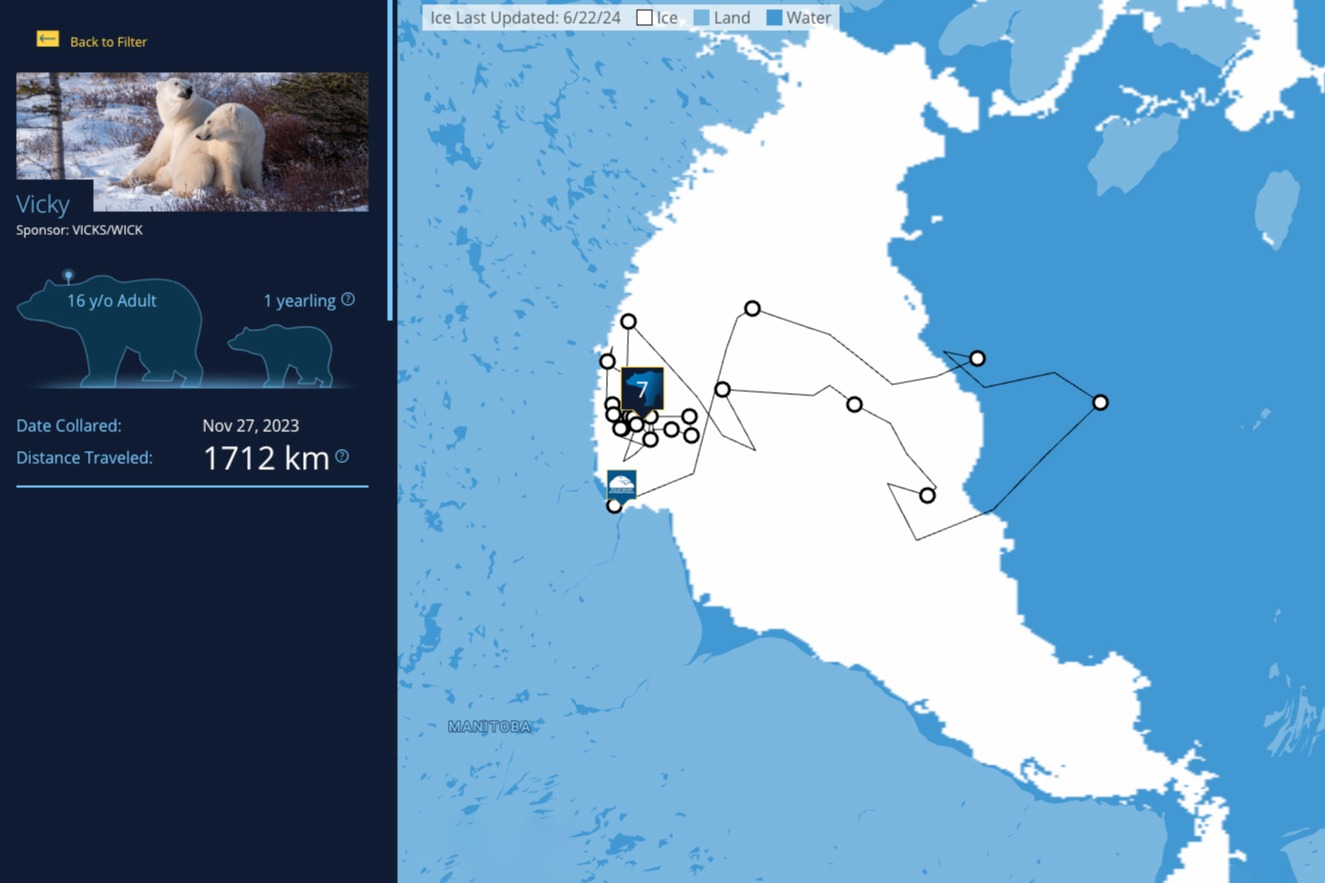
7. Vicky - X33881, VICKS
Vicky seems to have slowed down her large movements, but has stayed on the move in a smaller region north of Churchill. She’s been circling a particular area this spring, which likely means it was a great spot for seal hunting! Vicky would have weaned her offspring this spring and mated soon after. So, she really needs to be packing on the weight now, potentially hundreds of pounds, in anticipation of a long summer and fall ahead. When she returns to land she will be facing around eight months of not eating while she dens, gives birth to, and nurses cubs in a den. Once onshore, she won’t be eating seal blubber again until next March! However, even though she likely mated this spring and will be eating as much as possible, Vicky is not technically pregnant yet. Though she may be carrying a fertilized egg or two, she first needs to get fat enough for any eggs to implant this fall - a process known as “delayed implantation.” If she doesn’t maintain enough body fat to carry a healthy pregnancy, her body will reject the zygote(s) and she’ll try again next fall. Based on her movement patterns, we predict she’s eating a ton. It’s just a matter of how long the ice lasts and how much weight she can keep gaining until she’s forced back to land and heads back closer to Wapusk National Park to (hopefully) den for the fall. Good luck to Vicky, we look forward to following the next chapter of her journey!
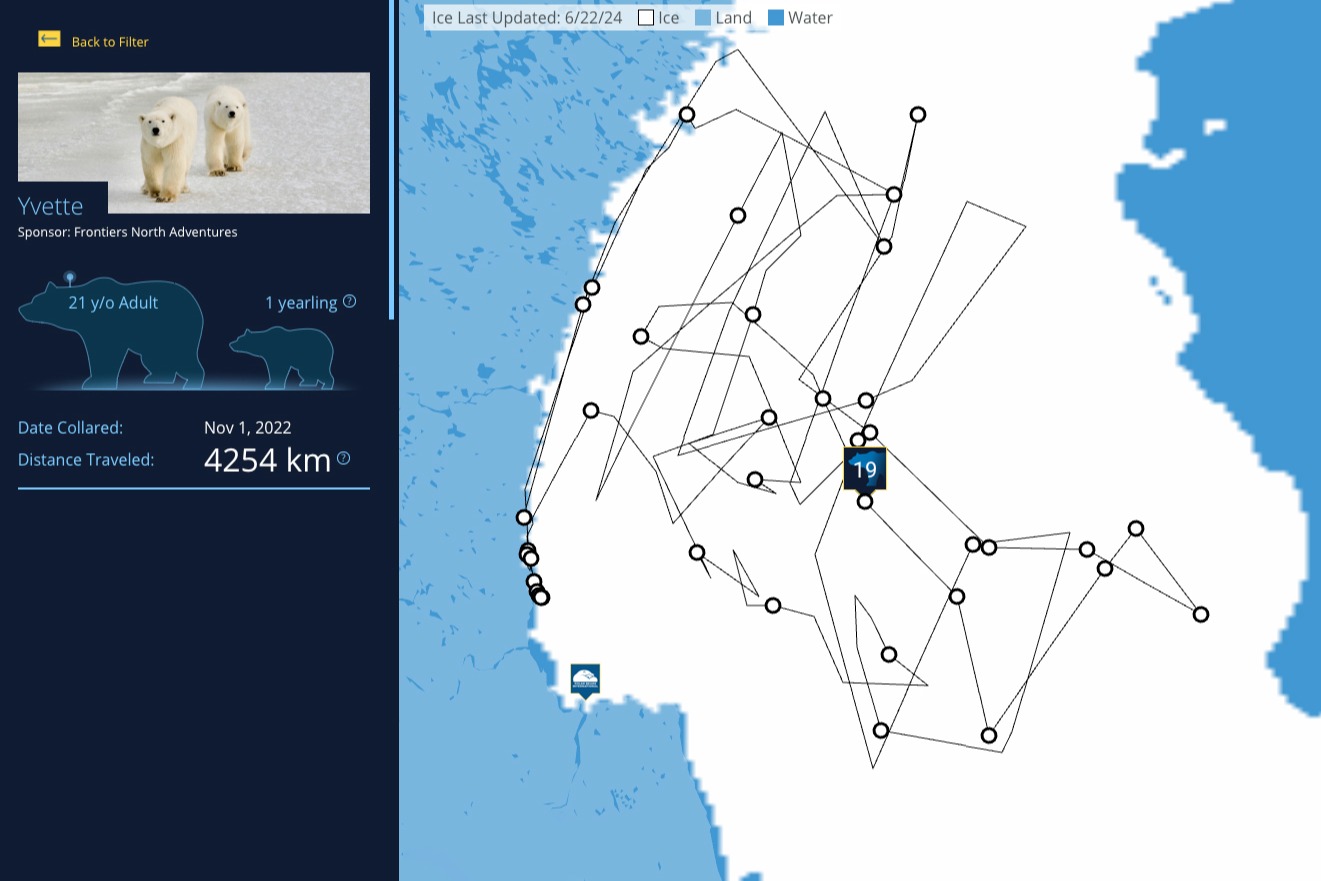
19. Yvette - X17402, Frontiers North Adventures
Yvette would have weaned her offspring this fall and mated again. Though she may be carrying a fertilized egg or two, she first needs to get fat enough for any eggs to implant this fall, a process known as “delayed implantation.” If she doesn’t gain enough body weight to give birth to cubs, her body will reject the pregnancy and she’ll try again next fall. Yvette needs to gain hundreds of pounds in order to spend the next eight months or so on land fasting, giving birth to, and nursing new cubs. We know she can do it as she clearly knows the region well and, at 21 years old, has gone through this at least several times already. Yvette’s collar hasn’t updated for awhile, but we know she's still out there and likely traveling a lot, probably heading toward the coast. Good luck to her as she decides when and where to come back to land and find a good resting spot for the long months ahead.
















